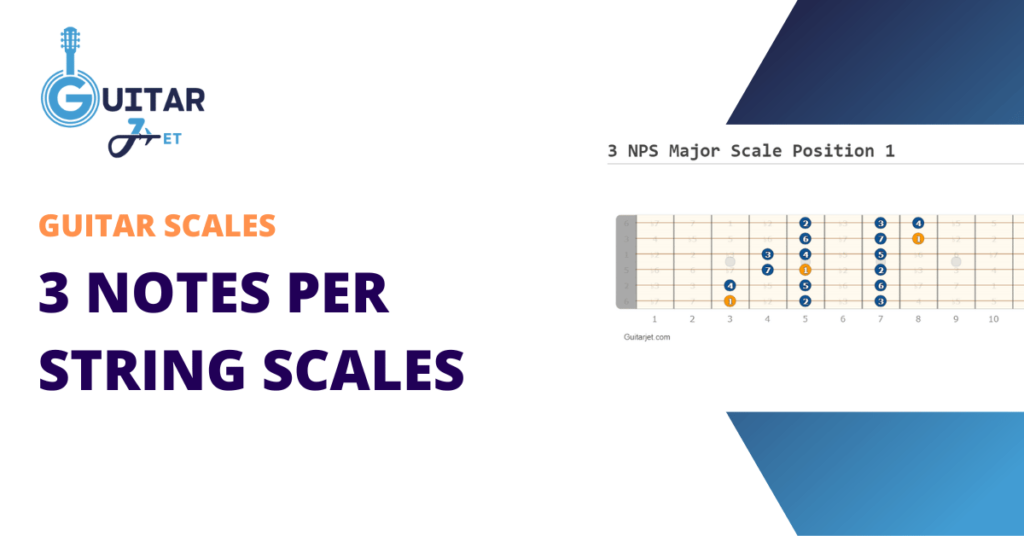Want to easily visualize the fretboard and improvise like a pro? If so, you need to learn about 3 notes per string scales.
3 notes per string scale shapes helped me understand the fretboard, and gave me the freedom to improvise in any major key.
So without further ado, let’s take a look at them.
Table of Contents
3 notes per string scales explained
But first, we need to quickly learn about the 3 notes-per-string system.
The 3 notes per string system organizes the fretboard into 7 unique shapes, 1 shape for each degree of the major scale (because the major scale has 7 total degrees).
Knowing where each of these shapes lies relative to the root note makes it easy to visualize the fretboard, which makes these guitar fundamentals easier to understand:
- Improvisation
- Composition
- Lead guitar
- Arpeggios
- Intervals
- Transposition
- Playing in other keys
With that being said, why wouldn’t you want to learn this system?
3 notes per string major scales
The most commonly used 3 notes per string scale patterns are major scale patterns.
All of the fretboard diagrams shown below are in the key of G Major, whose relative is E Minor.
But remember: You can transpose all of these shapes, which means you can move the shapes to a new root note, which will redefine the name of the scale.
For example, if you move position 1 up a half-step to the G# (the 4th fret of low E), it will become the G# major scale!
With that simple tip out of the way, let’s take a look at the positions.
Position 1
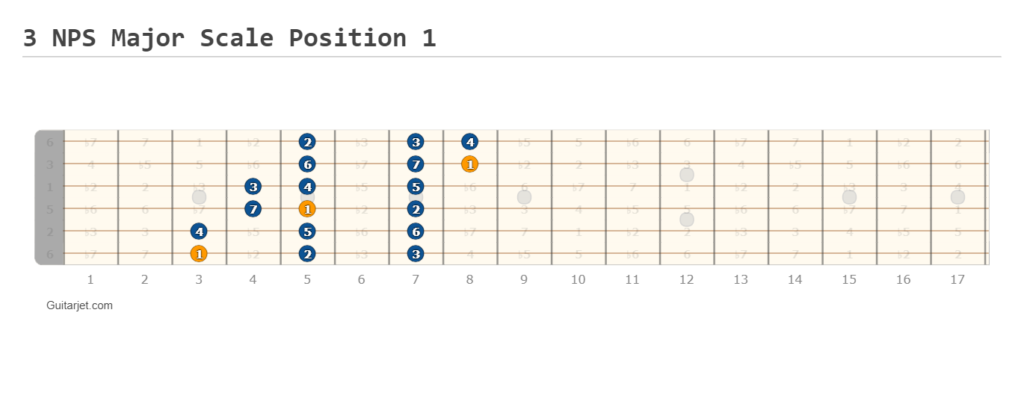
Position 2
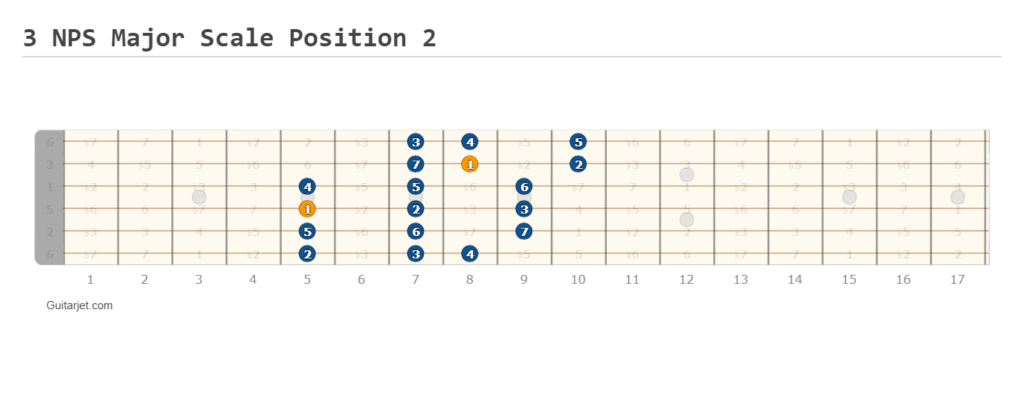
Position 3
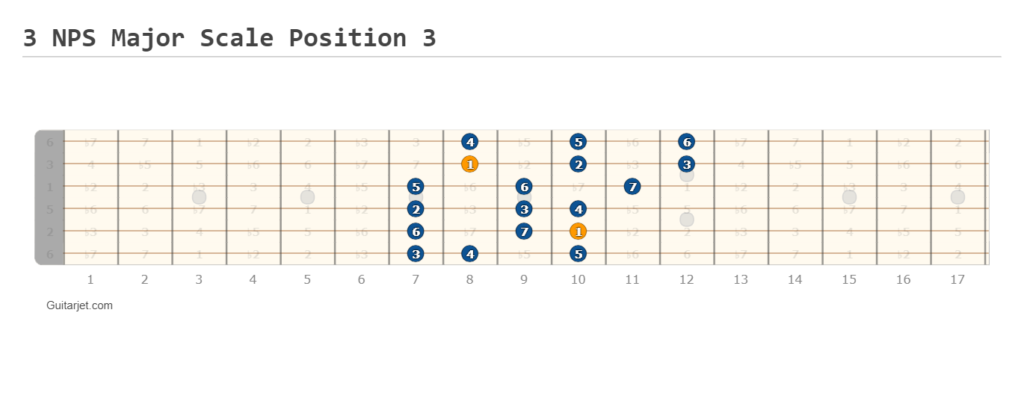
Position 4
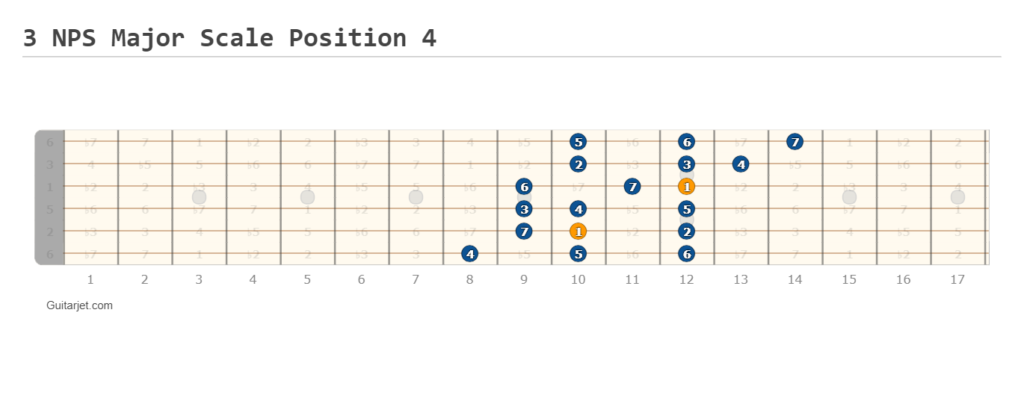
Position 5
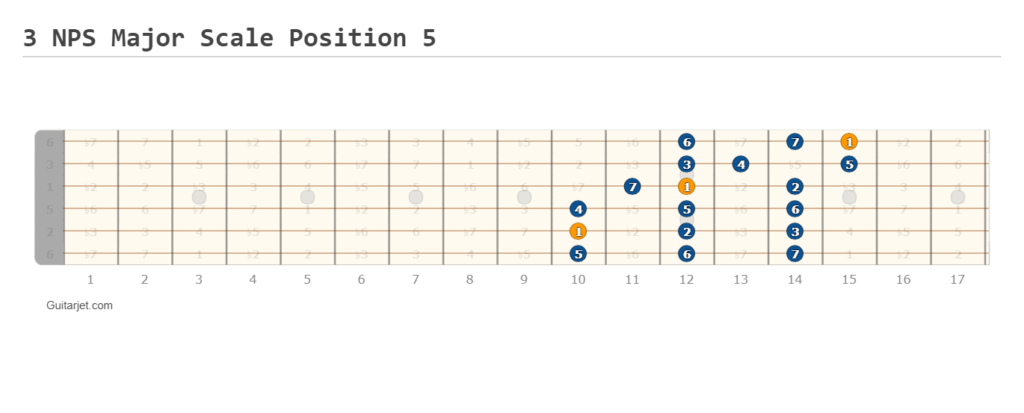
Position 6
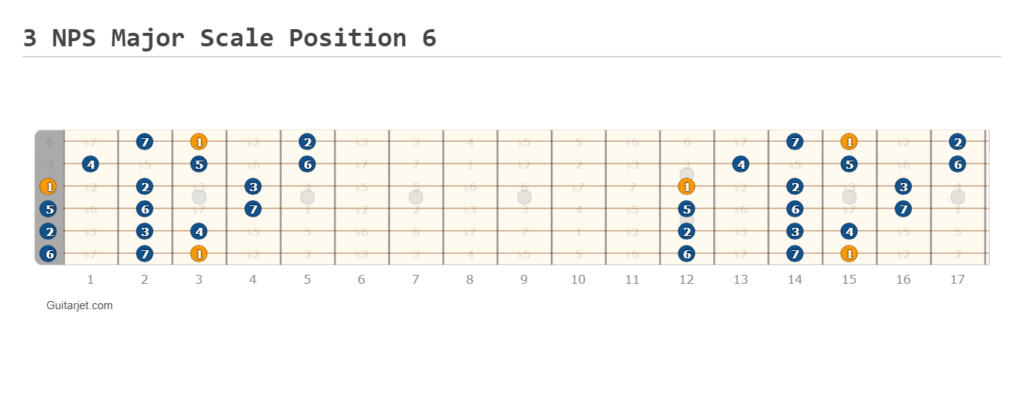
Position 7
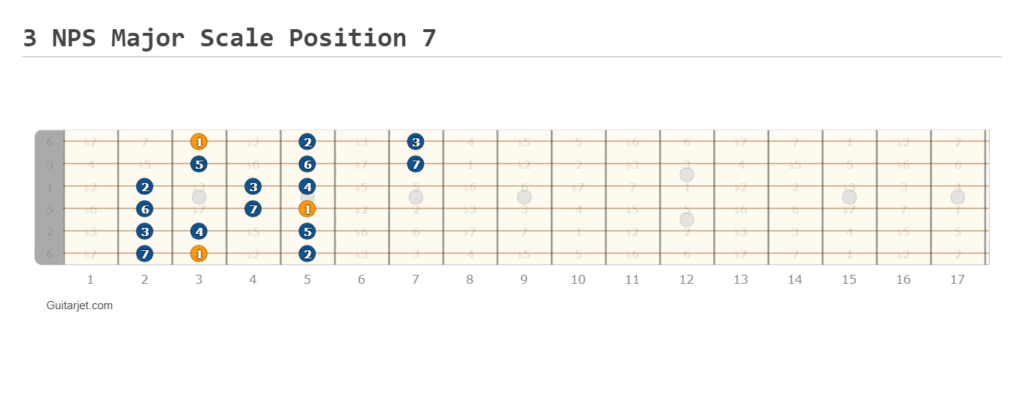
3 Notes Per String Major Scale Tabs And PDF
Practicing the scales
Now that you know the 3 notes per string scales, it’s time to practice them.
Practice these shapes with alternate picking or economy picking, and play the shapes both ascending (from low E to high e) and descending (from high e to low E).
Start by getting down shapes 1 and 7, as they are the easiest shapes to memorize, and moving from shape 7 to shape 1 feels natural.
And here’s a secret tip:
Practice the shapes without a guitar. You can do this by playing the outline of the shape (the finger structure), akin to an “air guitar“. I play Shape 1 on my leg and desk all the time.
Lastly, play at least 1 of these shapes every day. It will take you a matter of minutes to practice these shapes, and it will drastically improve your fretboard visualization skills.

